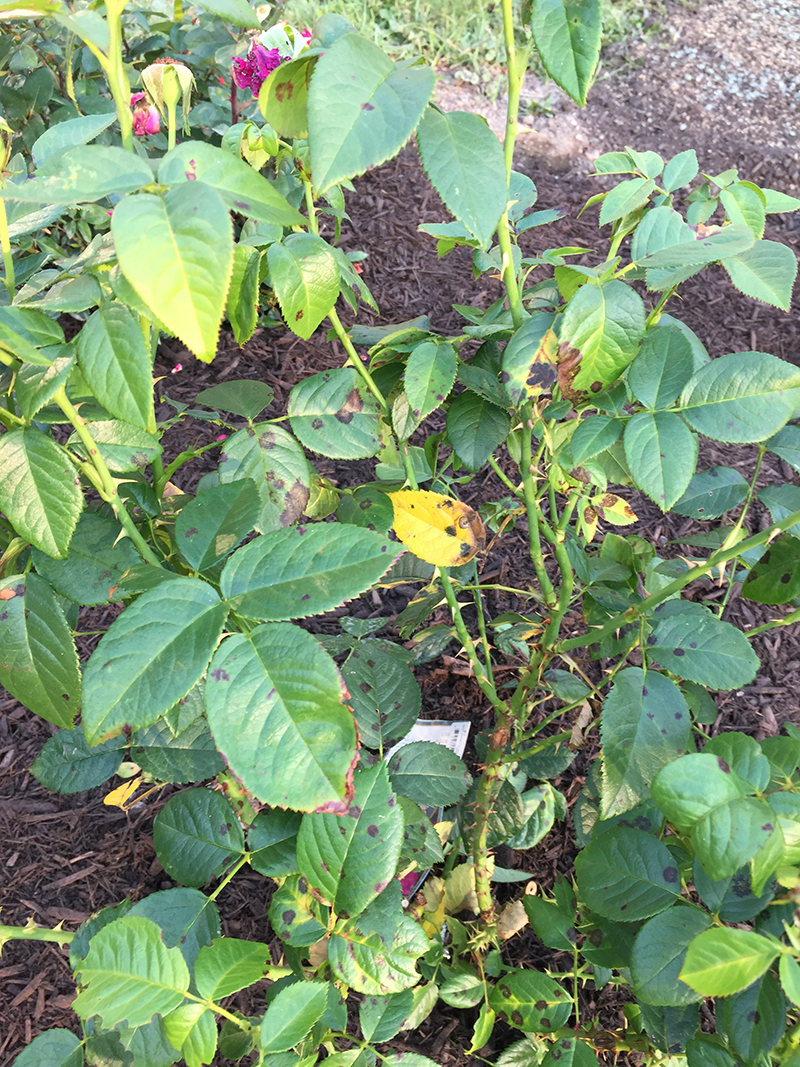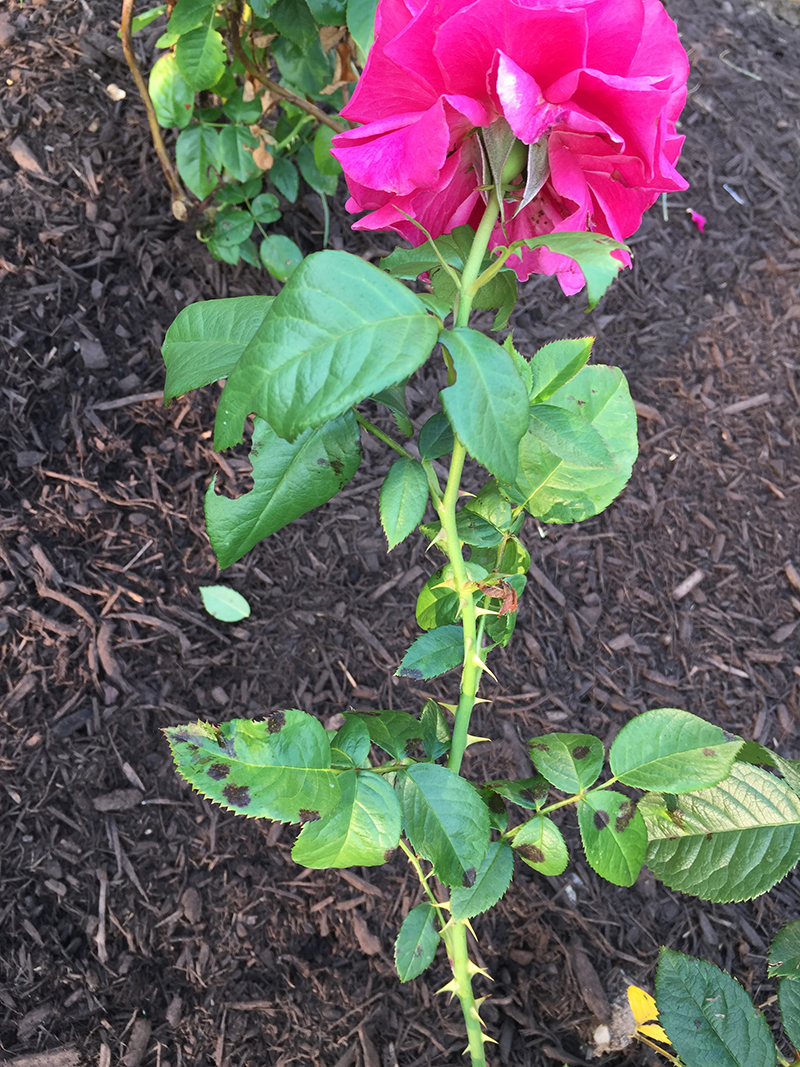Picture of the week
April 5, 2021
Reduce Defoliation From Rose Black Spot
Gail Ruhl; Retired PPDL Senior Plant Disease Diagnostician
Roses are a popular landscape and garden plant in Indiana. Black spot, caused by the fungus Diplocarpon rosae, is the major foliar disease of roses in Indiana. Infected leaves develop black spots, turn yellow and drop prematurely from the plant. Premature defoliation decreases plant energy reserves and results in reduced flowering of roses as well as weakening of plants to make them more susceptible to other site/cultural stresses, including winter damage.
The black spot fungus overwinters in diseased canes and infected fallen leaves beneath plants. Fungal spores germinate in the spring and are disseminated by splashing water up onto leaf surfaces and stems. Extensive periods of moisture during spring/summer months are required for infection to occur. Once infection is established, the fungus will multiply in black lesions, and new spores will be produced and splash to new tissue, spreading the disease.
Click image to enlarge
To reduce the spread of this fungal disease from infected to healthy leaves remove and dispose of diseased leaves as soon as symptoms are apparent. Dead, infected leaves on the ground beneath plants should also be collected and destroyed. Since the fungal spores need a wet surface to germinate and cause infection it is of utmost importance to keep the foliage as dry as possible. Do not use overhead irrigation if practical; or if you do, water early in the day so as to allow foliage to dry prior to nightfall. Prune plants to allow for adequate air circulation and facilitate the drying of foliage.
Some popular roses are so susceptible that in order to produce acceptable flowers they may require weekly fungicide application to protect healthy plant tissue. Fungicides will not cure infected leaves, but if applied regularly, will prevent infection of new leaves. There are many home garden fungicides registered for rose disease management. Some of the more effective formulations and active ingredients include captan, chlorothalonil (Daconil*), myclobutanil (Immunox Multipurpose Fungicide Spray), tebuconazole (Bayer 2-in-1 Disease Control, Rose Shield), and triforine (Funginex). Many other products listed as rose dusts are also effective. Check the labels for control of black spot. For optimal control, follow the spray schedule directions on the fungicide label. Most fungicides need to be applied every 7–14 days, however, label directions may differ between fungicide types. Complete coverage of both the tops and bottoms of leaves is important for optimal protection as well as reapplication following rain or overhead watering in excess of 1/4 inch.
Note that roses bred to be genetically resistant to black spot may still show some disease, depending on regional disease pressure related to conducive environmental conditions. In addition, if the black spot fungus adapts to the plant's resistance, disease resistance may break down and be lost.
The publications below provide additional information on management of rose black spot and other rose diseases.
Black Spot of Rose Factsheet - Tennesee State Extension





